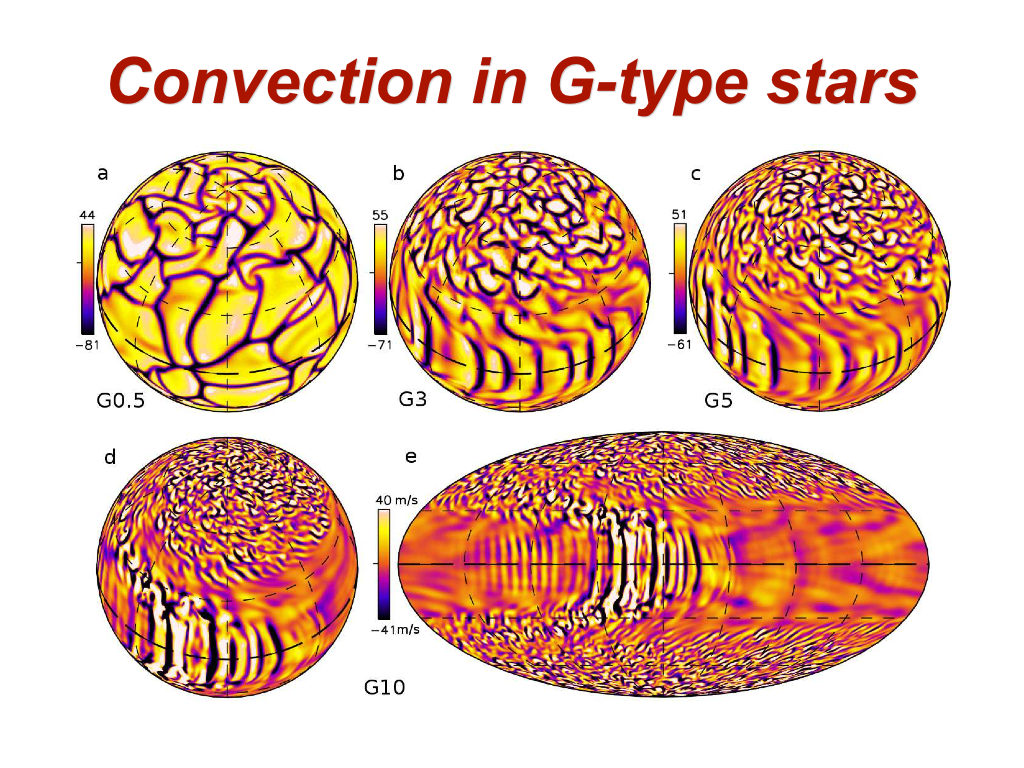Convection
Stratified convection and its propeties.

Role of Convection
Convection plays fundamental roles in the heat transport processes within stellar interiors and planetary atmospheres. Large-scale motions of convection can also contribute to chemical mixing, the driving of global-scale flows, and the creation of magnetic fields from dynamo processes.
Global-scale stellar convection

Convection at global-scales must be studied in a full spherical geometry to captuer both the interactions between convection and rotation and the resulting global-scale flows. The ASH code and it's modern open-source successor, Rayleigh, are exceptional tools for studying anelastic stratified convection within stellar settings. Generally, convection on the lower main sequence shares many similarities between different stellar types: slowly rotating stars have large-scale cells of convection and weak zonal flows, while rapidly rotating stars have columnar convection and strong zonal flows. In the most rapidly rotating experiments, equatorial convection can be strongly modulated by the zonal flows that it itself drives (Brown et al 2008). At higher or lower mass, the largest change is in the overall stellar luminosity, which modifies the interpretation of whether a star is rapidly or slowly rotating (Augustson et al 2008; Brun et al 2017).
Fundamental Stratified Convection

In comparison to lab-based convection, fundamental properties of stratified convection remain poorly known. Using the Dedalus pseudo spectral framework, we study fully compressible convection in stratified atmospheres. We have found that heat transport in stratified convection obeys a Nusselt-Rayleigh scaling behaviour that is very similar to that of incompressible Rayleigh-Benard convection (Anders & Brown 2017), and that there is remarkably little difference in fundamental heat transport between high- and low-Mach number flows.
Coupling between convection zones and stably-stratified regions is important in stars and exoplanets. From fundamental studies of penetration & overshoot, we have found that the extent of coupling is strongly dependent on the Mach number of the convection zone. At high Mach number, significant mixing occurs in the stable region. At low Mach number, internal gravity waves are driven and dominate the dynamics, rapidly robbing the nonlinear convection of its ability to mix the fluid outside the convection zone.